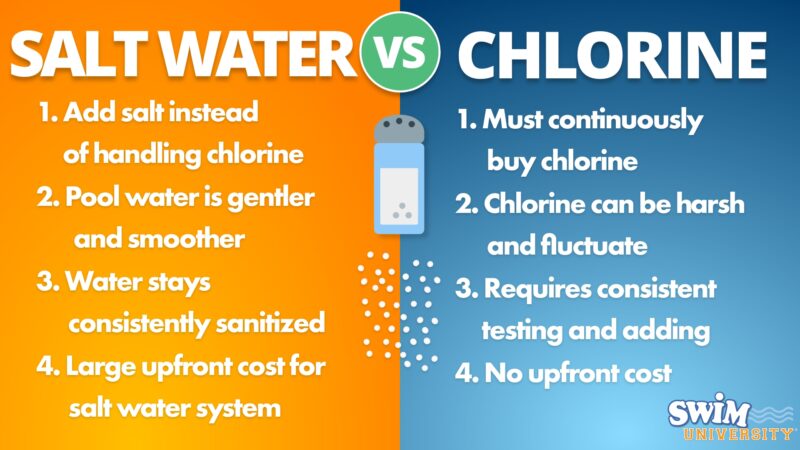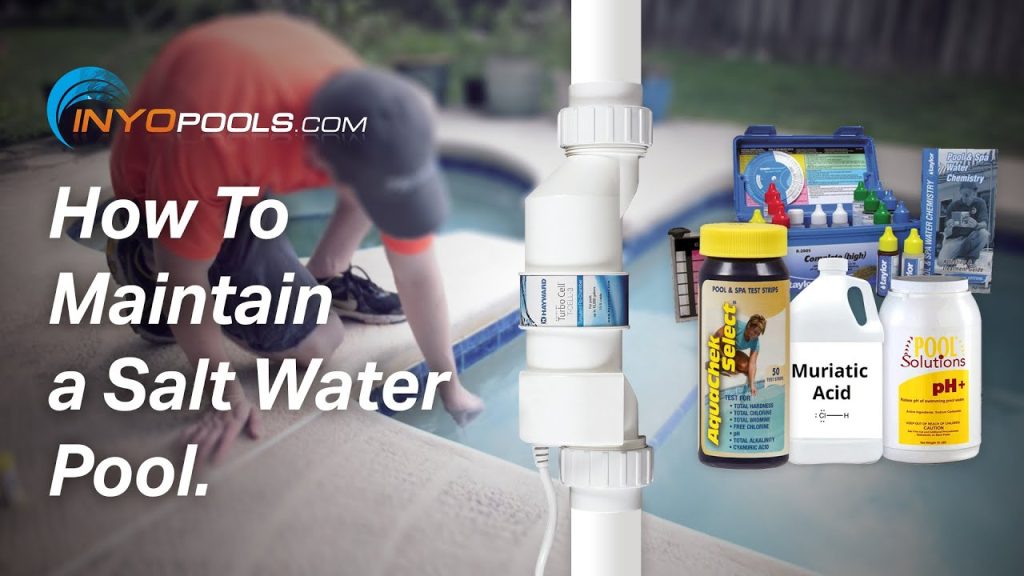Having a saltwater pool can be a luxurious and refreshing addition to your home. Not only do saltwater pools provide a more natural and gentle swimming experience, but they also require less maintenance compared to traditional chlorine pools. However, proper maintenance is still essential to ensure that your saltwater pool remains clean, safe, and enjoyable for years to come. In this comprehensive guide, we’ll explore the step-by-step process of maintaining a saltwater pool, from testing the water to cleaning the pool equipment.

Credit: www.wikihow.life
Testing and Balancing the Water
One of the most critical aspects of saltwater pool maintenance is testing and balancing the water chemistry. Regular testing of the pool water is necessary to ensure that the pH, alkalinity, and salt levels are within the optimal range. You can use a water testing kit specifically designed for saltwater pools to measure these parameters. Aim to test the water at least once a week, especially during the swimming season.
When it comes to balancing the water chemistry, the following parameters should be considered:
- pH Level: The ideal pH level for a saltwater pool is between 7.2 and 7.8. Use a pH increaser or decreaser as needed to maintain the proper balance.
- Alkalinity: The recommended alkalinity range is 80-120 ppm (parts per million). Alkalinity stabilizer can be used to adjust the levels if necessary.
- Salt Level: Ensure that the salt level is maintained within the range recommended by the pool manufacturer. Add salt if the levels are low, and consider draining and diluting the water if the levels are too high.

Credit: www.swimuniversity.com
Chlorine Generation and Maintenance
Unlike traditional chlorine pools where chlorine needs to be manually added, saltwater pools use a chlorine generator to produce chlorine from the salt in the water. The generator, also known as a salt cell, should be regularly inspected and cleaned to ensure efficient operation. Follow these steps to maintain the chlorine generation system:
- Inspect the Salt Cell: Check the salt cell for any calcium or scale buildup. If present, it should be cleaned using a solution of diluted muriatic acid and water. Be sure to follow the manufacturer’s instructions for proper cleaning.
- Monitor Chlorine Output: Regularly check the chlorine output to ensure that it is within the recommended range. Adjust the salt cell settings if necessary to achieve the desired chlorine level.
- Inspect for Damage: Periodically inspect the salt cell for any signs of damage or wear. If any issues are detected, consult with a professional for repairs or replacement.
Regular Cleaning and Maintenance
In addition to water chemistry and chlorine generation, regular cleaning and maintenance of the pool and its equipment are crucial for a well-maintained saltwater pool. Here are some essential maintenance tasks to keep your pool in top condition:
- Skimming and Vacuuming: Remove debris from the surface of the water using a skimmer, and vacuum the pool floor and walls to eliminate dirt and algae buildup.
- Brushing the Walls: Use a pool brush to scrub the walls and tiles to prevent the accumulation of algae and other contaminants.
- Filter Maintenance: Clean or backwash the pool filter regularly to ensure proper filtration and circulation of the water.
- Inspecting Equipment: Check the pool pump, skimmer baskets, and other equipment for any signs of damage or malfunction. Address any issues promptly to avoid further damage.
Winterizing and Off-Season Maintenance
When the swimming season comes to an end, proper winterizing of the saltwater pool is essential to protect it from the harsh effects of cold weather. Here’s how to prepare your pool for the off-season:
- Balance the Water Chemistry: Before closing the pool, ensure that the water chemistry is properly balanced and that the pH and alkalinity levels are within the recommended range. If you don’t know how to balance saltwater pool then check our previous article.
- Clean the Pool: Thoroughly clean the pool, including skimming, vacuuming, and brushing the walls, to remove any debris and prevent algae growth during the off-season.
- Lower the Water Level: Lower the water level to below the skimmer intake to prevent freezing and potential damage to the pool equipment.
- Protective Cover: Cover the pool with a durable and secure winter cover to shield it from debris and harsh weather conditions.
Professional Maintenance and Servicing
While regular DIY maintenance is essential for keeping your saltwater pool in optimal condition, there are certain tasks that are best left to the professionals. Hiring a professional pool service company to perform periodic inspections, maintenance, and servicing can provide peace of mind and ensure that your pool is well-maintained year-round. Professional services may include:
- Salt Cell Inspection and Cleaning: Professional technicians can thoroughly inspect and clean the salt cell to remove stubborn scale and ensure efficient chlorine generation.
- Equipment Inspection: Professional technicians can inspect the pool pump, filter, and other equipment for any issues and perform necessary repairs or replacements.
- Water Testing and Balancing: Professional pool service companies have the expertise and equipment to conduct comprehensive water testing and ensure that the pool water is perfectly balanced.
Frequently Asked Questions
Q: How often should I check the salt levels in my saltwater pool?
A: Check the salt levels at least once a month to ensure they are within the recommended range, typically 2,700 to 3,400 ppm.
Q: What maintenance does a saltwater generator need?
A: Inspect and clean the salt cell regularly, usually every 3 to 6 months, to prevent calcium buildup and ensure efficient operation.
Q: Do I still need to check other chemical levels in a saltwater pool?
A: Yes, regularly test and balance pH, chlorine, alkalinity, and calcium hardness levels to maintain water quality and prevent equipment damage.
Q: How often should I clean the pool filter in a saltwater pool?
A: Clean the pool filter at least once a month to remove debris and ensure proper filtration and water circulation.
Q: What should I do if my saltwater pool water turns cloudy?
A: Test and adjust chemical levels, clean the filter, and ensure the salt cell is functioning properly. Shocking the pool may also help.
Q: Can I use regular pool salt for my saltwater pool?
A: Yes, use high-purity pool salt specifically designed for saltwater pools to avoid impurities and ensure proper chlorine generation.
Q: How often should I run the pump and saltwater generator?
A: Run the pump and generator for 8-12 hours a day, depending on the pool size and usage, to maintain adequate circulation and chlorine production.
Q: Do saltwater pools require winterizing?
A: Yes, if you live in a region with freezing temperatures, follow proper winterizing procedures to protect your pool and equipment.
Final Words
Maintaining a saltwater pool involves regular testing and balancing of the water chemistry, proper maintenance of the chlorine generation system, and regular cleaning and upkeep of the pool and its equipment. Additionally, winterizing the pool and seeking professional maintenance services when needed are crucial steps in ensuring the longevity and enjoyment of your saltwater pool. By following these maintenance guidelines, you can keep your saltwater pool in pristine condition and enjoy a refreshing and relaxing swimming experience for years to come.





